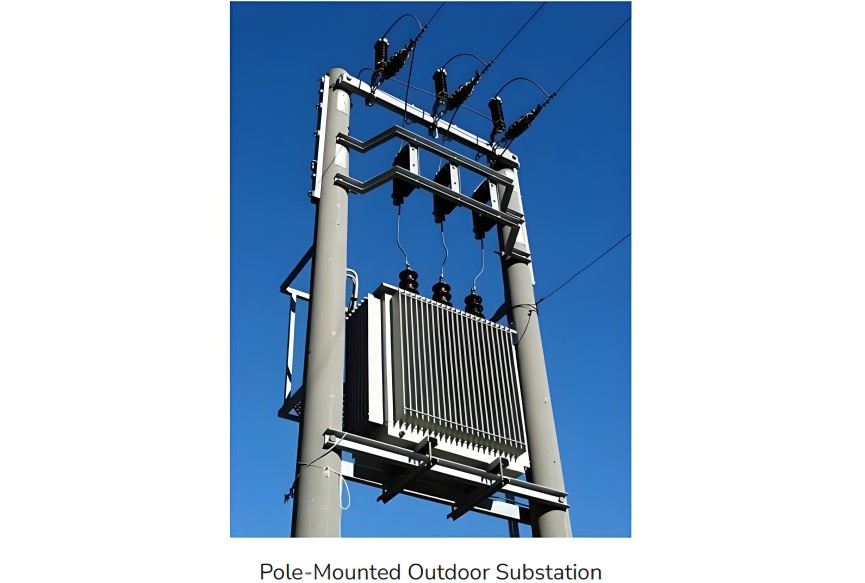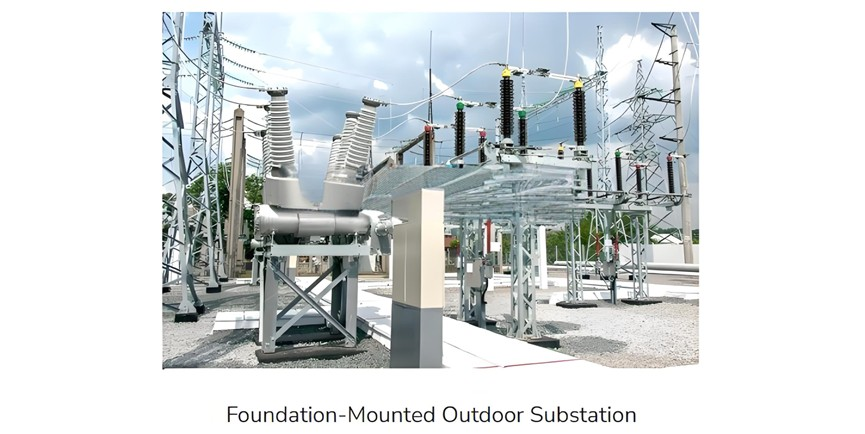Outdoor Substation
An outdoor substation is one that accommodates all voltage levels ranging from 55 KV to 765 KV. This type of substation generally requires less construction time but occupies more space. Outdoor substations are primarily categorized into two types: pole - mounted substations and foundation - mounted substations.
Pole - Mounted Substation
Pole - mounted substations are utilized to support distribution transformers with a capacity of up to 250 KVA. These transformers are among the most cost - effective, simplest, and smallest in distribution systems. All the equipment in such substations is of the outdoor type and is mounted on the supporting structures of the high - tension distribution line. A triple - pole mechanically operated switch is employed to switch the high - tension transmission line on and off.
An HT (High Tension) fuse provides protection for the high - tension transmission line. For controlling low - tension lines, low - tension switches accompanied by fuses are installed. Lightning arresters are placed on the high - tension line to safeguard the transformers from voltage surges. Pole - mounted substations are earthed at two or more locations for safety.
Transformers with a capacity of up to 125 KVA are mounted on a double - pole structure. For transformers with a capacity ranging from 125 to 250 KVA, a 4 - pole structure with an appropriate platform is utilized. These substations are typically situated in densely populated areas.
Their maintenance cost is relatively low. In a town, deploying a large number of such substations allows for the installation of distributors at a lower cost. However, as the number of transformers increases, the total KVA rises, leading to an increase in no - load losses and an uptick in the cost per KVA.
Foundation - Mounted Substation
In a foundation - mounted substation, all the equipment is assembled, and the substation is surrounded by a fence for safety. The equipment required for this type of substation is heavy. Therefore, the site chosen for a foundation - mounted substation must have a suitable route for heavy - duty transportation. An illustration of a foundation - mounted outdoor substation is provided below.

Transformers with a capacity of up to 125 KVA are mounted on a double - pole structure. For transformers with a capacity ranging from 125 to 250 KVA, a 4 - pole structure with an appropriate platform is utilized. These substations are typically situated in densely populated areas.
Their maintenance cost is relatively low. In a town, deploying a large number of such substations allows for the installation of distributors at a lower cost. However, as the number of transformers increases, the total KVA rises, leading to an increase in no - load losses and an uptick in the cost per KVA.
In a foundation - mounted substation, all the equipment is assembled, and the substation is surrounded by a fence for safety. The equipment required for this type of substation is heavy. Therefore, the site chosen for a foundation - mounted substation must have a suitable route for heavy - duty transportation. An illustration of a foundation - mounted outdoor substation is provided below.

Advantages of Outdoor Substations
Outdoor substations offer several key advantages:
- Easier Fault Detection: All equipment in outdoor substations is visible, which simplifies the process of locating faults.
- Simplified Expansion: Expanding the installation is more straightforward compared to indoor counterparts.
- Faster Construction: These substations require less time to construct.
- Lower Material Requirement: They demand a relatively small quantity of building materials such as steel and concrete.
- Reduced Construction and Installation Costs: The construction work is comparatively less extensive, and the cost of switchgear installation is also quite low.
- Convenient Repair and Isolation: Repair work is easy to carry out. Adequate space between apparatus ensures that a fault at one location doesn't spread to other components.
Disadvantages of Outdoor Substations
- Higher Space Requirement: Outdoor substations necessitate a larger area.
- Need for Surge Protection: Protection devices must be installed to safeguard against lightning surges.
- Increased Cable Costs: The length of control cables is greater, which raises the overall cost of the substation.
- Higher Equipment Cost: Equipment designed for outdoor use is more expensive since it needs additional protection against dirt and dust.
Despite these drawbacks, outdoor substations are widely employed in power systems.









